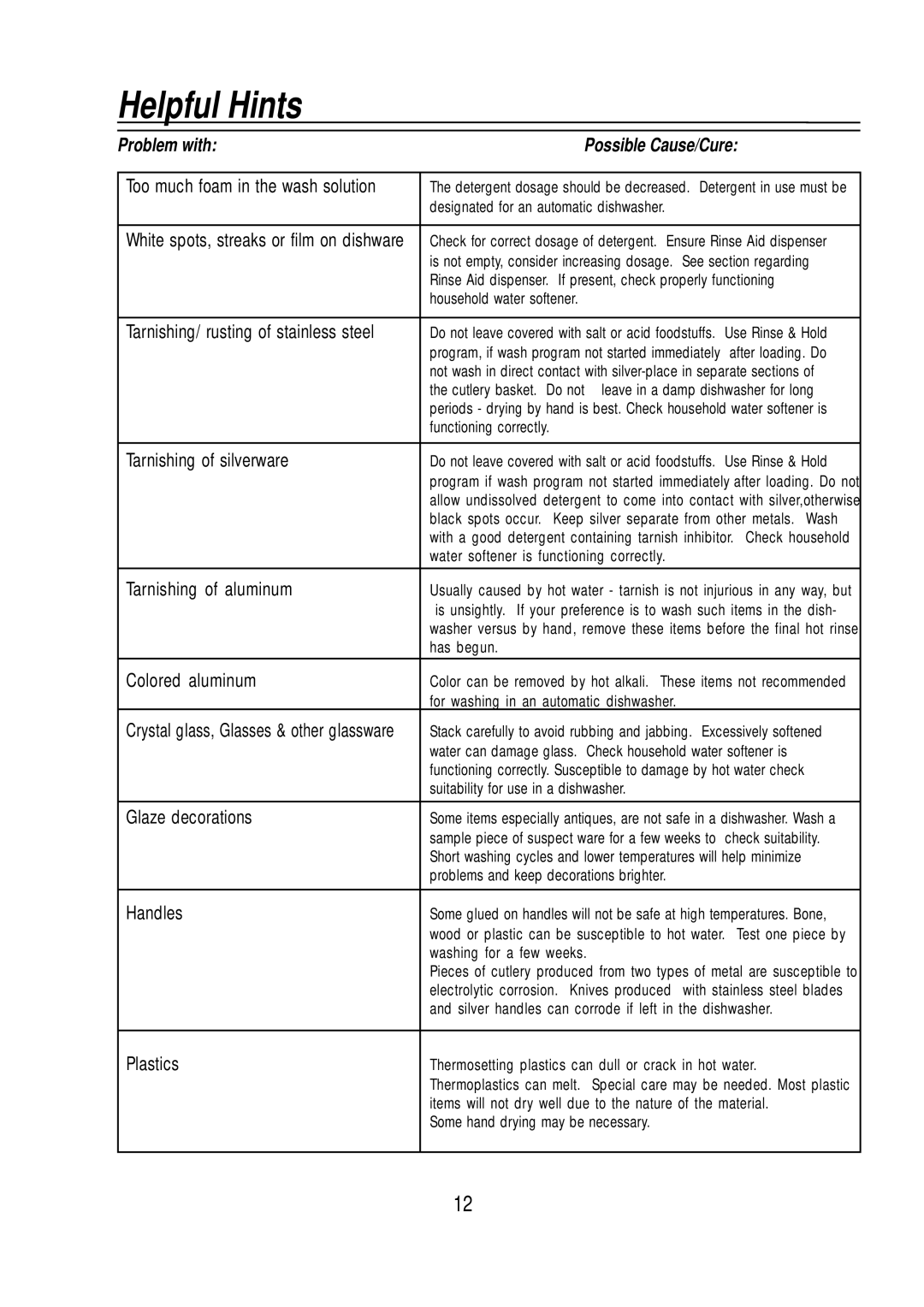Helpful Hints
Problem with: | Possible Cause/Cure: |
|
|
Too much foam in the wash solution | The detergent dosage should be decreased. Detergent in use must be |
| designated for an automatic dishwasher. |
|
|
White spots, streaks or film on dishware | Check for correct dosage of detergent. Ensure Rinse Aid dispenser |
| is not empty, consider increasing dosage. See section regarding |
| Rinse Aid dispenser. If present, check properly functioning |
| household water softener. |
|
|
Tarnishing/ rusting of stainless steel | Do not leave covered with salt or acid foodstuffs. Use Rinse & Hold |
| program, if wash program not started immediately after loading. Do |
| not wash in direct contact with |
| the cutlery basket. Do not leave in a damp dishwasher for long |
| periods - drying by hand is best. Check household water softener is |
| functioning correctly. |
|
|
Tarnishing of silverware | Do not leave covered with salt or acid foodstuffs. Use Rinse & Hold |
| program if wash program not started immediately after loading. Do not |
| allow undissolved detergent to come into contact with silver,otherwise |
| black spots occur. Keep silver separate from other metals. Wash |
| with a good detergent containing tarnish inhibitor. Check household |
| water softener is functioning correctly. |
|
|
Tarnishing of aluminum | Usually caused by hot water - tarnish is not injurious in any way, but |
| is unsightly. If your preference is to wash such items in the dish- |
| washer versus by hand, remove these items before the final hot rinse |
| has begun. |
Colored aluminum | Color can be removed by hot alkali. These items not recommended |
| for washing in an automatic dishwasher. |
Crystal glass, Glasses & other glassware | Stack carefully to avoid rubbing and jabbing. Excessively softened |
| water can damage glass. Check household water softener is |
| functioning correctly. Susceptible to damage by hot water check |
| suitability for use in a dishwasher. |
|
|
Glaze decorations | Some items especially antiques, are not safe in a dishwasher. Wash a |
| sample piece of suspect ware for a few weeks to check suitability. |
| Short washing cycles and lower temperatures will help minimize |
| problems and keep decorations brighter. |
|
|
Handles | Some glued on handles will not be safe at high temperatures. Bone, |
| wood or plastic can be susceptible to hot water. Test one piece by |
| washing for a few weeks. |
| Pieces of cutlery produced from two types of metal are susceptible to |
| electrolytic corrosion. Knives produced with stainless steel blades |
| and silver handles can corrode if left in the dishwasher. |
|
|
Plastics | Thermosetting plastics can dull or crack in hot water. |
| Thermoplastics can melt. Special care may be needed. Most plastic |
| items will not dry well due to the nature of the material. |
| Some hand drying may be necessary. |
|
|
12
